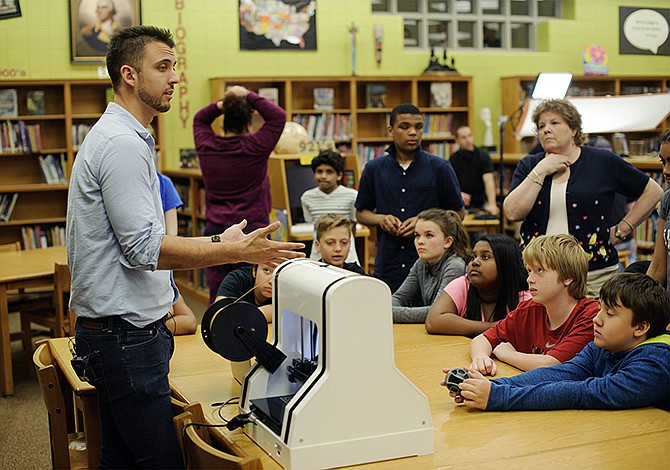The local Boys and Girls Club unveiled its new 3-D printer to middle school students after it was donated by a Jefferson City High School graduate.
The Boys and Girls Club of the Capital City received a grant from the Department of Elementary and Secondary Education in 2014 to start a STEM (science, technology, engineering and mathematics) program.
After Grant Sadowski, the CEO of Becoming 3D in Florida and a JCPS alum, found out about the program, he contacted one of his 3-D printing manufacturers to donate a printer to the club.
Sadowski and a representative from Robo 3D, the manufacturer, flew to Jefferson City to visit Thomas Jefferson Middle School on Wednesday and present the printer to the students. They're also taping a tutorial for the club members, which will be shown at the Boys and Girls Club of America National Conference.
Robo 3D writes school curriculum for 3-D printers and is in the process of writing curriculum specifically for the Boys and Girls Club.
Using the curriculum, students will learn how to create images on a laptop connected to the 3-D printer and how to format those images so the printer can read them.
The Boys and Girls Club recognized how influential technology is in a student's life - cellphones have practically become an extension of our bodies - so, Johnson said, in order to maintain students' interests, the club had to integrate more technology into the after-school program.
The students are already making documentaries using a digital art suite. They also have an electronic circuit board, a culinary arts program, and guitar and sewing lessons.
With the mobility of the 3-D printer, students at Thomas Jefferson and Lewis and Clark middle schools will be able to use it, said Stephanie Johnson, executive director of the local Boys and Girls Club.
The local club serves about 350 JCPS students daily on the elementary and secondary levels. The club is free to middle school and high school students, as well as elementary school students who participate in the free and reduced lunch program.
"We try to target students with a lower socio-economic status who may not have access to things like this," Johnson said.
The Boys and Girls Club has programs at both middle schools and three elementary schools - as well as some elementary school students who are bused to the Southwest Early Childhood Center.
The Simonsen Ninth Grade Center students and the high school students share a space at the Boys and Girls Club teen center. The teen center also serves a hot dinner to the students each night and serves about 20,000 meals to club members annually.
The local club will eventually have a campus on Lincoln University's campus to house the elementary and high school students, and it will have dedicated space for the STEM program, Johnson said.
"I just want to thank Grant (Sadowski) for coming back to his hometown to help kids from his hometown," she said.

